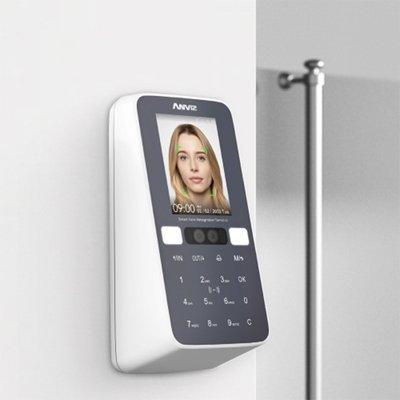 |
| If airport perimeter fencing is vulnerable then covert detection methods should be used |
Lack of airport perimeter security would be laughable, if it weren’t so serious. A recent farcical breach of security in London is drawing renewed attention to airport perimeter protection.
I want to focus on airport perimeter security, but we’ll start with critical infrastructure in general: A nun, a housepainter and a gardener break into a nuclear facility. This sounds like the beginning of a joke except it was a disturbing reality when the trio (the nun proving to be exceptionally limber at the age of 82) defeated perimeter fencing at the Y-12 National Security Complex in Oak Ridge, Tennessee, a facility that houses the United States’ stocks of bomb-grade uranium and missiles confiscated from Libya’s Colonel Gaddafi.
Perimeter breach at JFK airport
This incident occurred in July 2012, and only a month later, a man on a jet ski clambered out of the water on the edge of John F. Kennedy International Airport, scaled a perimeter fence and walked along a runway apron. Reading a news item about this at the time, I missed a fundamental point. It should be noted that Daniel Casillo’s craft had broken down and he was neither an activist nor a deliberate trespasser. He had swum for three miles, was scared, tired and on the verge of hypothermia. His first action on nearing a terminal building was to make his presence known to a cargo worker.
But it gets worse. JFK was exposed twice on consecutive days in June of this year when a would-be fisherman went over a fence, and an uncle and nephew duo deliberately tried to summon help by shaking another fence violently after the engine of their boat had failed. Consider what a group of determined jihadists equipped with bolt-cutters and weapons could do amid such lax perimeter protection. It’s enough to give me sleepless nights, and I don’t even work in airport security.
Negligent security at Heathrow airport
I thought I’d seen it all until I switched on the news earlier this month to see activists dressed as polar bears on the northern runway of London’s Heathrow International Airport after they had cut away a sizable section of chain link fence. Am I alone in thinking that terror groups might look at mainstream news sources and get ideas?
The activists are from the environmental group Plane Stupid and were protesting plans for expansion at Heathrow. They assembled a tripod device themselves out of poles, and news channels chose to go with an extraordinary photograph of a polar bear (who has tactfully raised part of his headgear) being coaxed down by firemen on a cherry picker.
Glasgow International’s breach incident
It would be amusing if the security risks exposed were not so grave. Again, am I in a minority as I remember how Glasgow International, an airport I’ll fly into next month for my annual holiday, was attacked during 7/7 week in the UK when a radicalised British-born doctor drove a flaming Jeep Cherokee into its perimeter?
Airport security options are comprehensive; there’s a robot that travels on a fence-mounted monorail checking for unusual situations |
Airport perimeter security solutions
Airports are secured (or not) by techniques including conventional plain fencing (typically a minimum of 6 feet high and topped with razor wire), microphonic fencing, terrain-following volumetric sensors, fibre optic sensors, digital microwave, infrared sensors, ground radar (often used in a sterilized zone between two fences), conventional “white light” CCTV with motion detection and thermal imaging cameras. The options are comprehensive, and one manufacturer even has a robot that travels on a fence-mounted monorail checking for unusual situations that may indicate an intrusion. The robot uses laser detection to alert against possible fence damage and suspicious objects.
My own hope is that tumbling prices of thermal cameras (as manufacturers who have recouped their initial R&D costs allow the products to be more commercially viable) will see the units become more widespread. By definition they excel in low light and are effective at large perimeters. The “thermograms” they produce are high-contrast and therefore well suited to video analytics.
I also believe that if fencing is going to prove consistently vulnerable then the airport community should bolster it with more use of covert detection methods. On a visit to a testing field run by one of the world’s largest (and most technically agile) manufacturers, I observed buried volumetric sensors being calibrated to fine tolerances so that they could reliably distinguish between human intruders and wildlife based not just on weight but pattern of movement.
Unaccounted intrusion incidents
In the United States, the Transportation Security Administration (TSA) is responsible on a nation-wide basis for screening passengers and baggage, but individual airports are tasked with securing their perimeters, a distinction that suggests the government thinks threats are more likely to come from within. Concerns have been voiced over the fact that, frequently, manned guarding is not even performed by airport staff but by poorly motivated casual workers from third-party contracting companies. If a trespass incident does not result in a police log then contractors will be showing exceptional integrity if they report each and every event to the airport. In turn, it’s naïve to expect airports to behave with complete transparency towards the TSA. They certainly don’t co-operate with the media, and earlier this year, the Port Authority of New York & New Jersey (responsible for Kennedy, LaGuardia and Newark airports) refused to give full accounts of intrusion incidents to the Associated Press.
Threat and risk assessment
Airports need to work with specialist consultants who can conduct penetrative threat assessments, and equipment specifiers in the US may wish to consult the National Safe Skies Alliance. Tennessee-based Safe Skies not only assesses the functionality of airport security equipment but exploits field conditions that are so realistic they can make predictions about whole life cycles. I don’t subscribe to the passive acceptance that only a terrorist atrocity resulting from a perimeter breach will finally spur the aviation community to put its house in order. Israel is of course a special case but the sector as a whole might like to note that a spokesperson for Ben Gurion in Tel Aviv announced earlier this year that the airport spends $200 million annually on perimeter protection alone.
Returning to the recent intrusion at Heathrow; now well into middle age, I’m plagued with the usual incredulity as to what is going on around me. It hits everybody at my time of life. Have 13 people in polar bear costumes really just penetrated Europe’s busiest airport with seemingly little more effort than would have been required to break into a chicken coop?









































